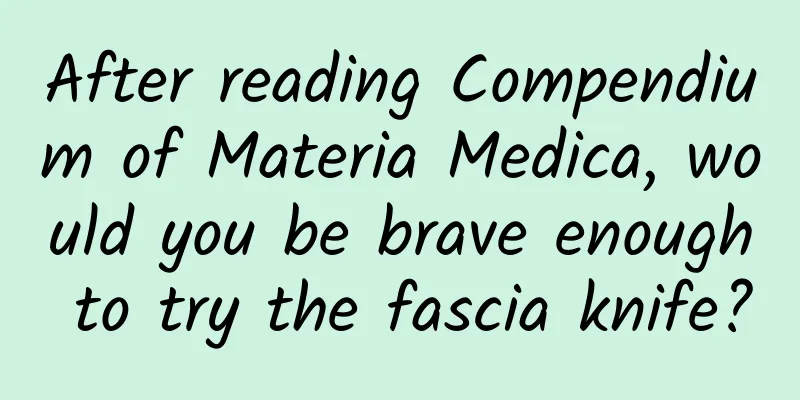Will our poop pollute rivers, lakes and seas?

|
People have to eat grains and cereals to get rid of their three urgent needs, but the more civilized the society, the less likely it is to have problems with poop, urine and farts. Being able to solve this private and inevitable problem so exquisitely, as a great invention in modern civilization, flush toilets have really improved our quality of life: after each smooth and comfortable use, just press a button, and it will be as if nothing has happened except the sound of water. But where does the excrement that leaves our body go? Some people worry that as more and more excrement accumulates, there will be a day when there will be no more space for it. Some people have heard that our toilets actually lead directly to rivers, lakes and seas. If this continues, won’t the clear and rippled rivers and seas become smelly? In fact, modern cities have established a complete system for excrement treatment. Let’s learn about it today! 01 After septic tank pretreatment Entering the municipal sewage network After our excrement falls into the toilet, it will enter the community septic tank under the impact of the water flow. Septic tanks generally have three levels of sedimentation and interception, and feces and urine will stay at each level for a period of time to remove large solid components. What can successfully flow out of the septic tank is mainly clear liquid with less suspended solids such as feces, which are then collected through the municipal sewage pipe network and enter the urban sewage treatment plant. After being treated and meeting the discharge standards, they have been cleaned beyond recognition and will enter natural water bodies or be reused as recycled water. From the perspective of specific functions, septic tanks in modern society are more in line with the elegant name given to toilets by Sun Dasheng in "Journey to the West" - the place where grains are reincarnated. It should be noted that the final destination of our kitchen sewers is also the sewage treatment plant. However, since the toilet sewage contains a large amount of organic matter such as feces, it needs to be decomposed and fermented in a septic tank and the solid-liquid separation is carried out before it is merged with other domestic sewage and finally "victoriously reunited" at the sewage treatment plant. Tuchong Creative 02 Separation of rainwater and sewage to protect river water sources I believe everyone has seen that when it rains, rainwater will flow into the sewers on both sides of the roads and streets. Then, are these sewers also flowing with feces discharged from the flush toilets in every household? At present, most areas in my country have achieved rainwater and sewage separation, that is, rainwater and sewage are separated and collected by a separate drainage pipe network system. Rainwater is discharged directly into the river through the rainwater pipe network; sewage is collected through the sewage pipe network and sent to the sewage treatment plant for treatment to avoid directly entering the river and causing water pollution. At the same time, the separate collection, discharge and reuse management of rainwater can effectively reduce the impact of rainwater entering the sewage pipe network on the sewage treatment plant and ensure the efficiency of sewage treatment. Tuchong Creative 03 Is the water used to flush the toilet tap water? Some students who are more eager for knowledge and curious have another question: Are the water used to flush the toilet and the tap water from the kitchen faucet of the same quality and source? In fact, in most areas, the water used in toilets and kitchens is the same, which is produced by water treatment plants after purification and disinfection, and meets the corresponding standards for people's living and production use. Domestic water is mainly drawn from rivers, lakes, groundwater and surface water by water plant intake pump stations. The water plant follows the "National Sanitary Standards for Drinking Water" and undergoes a series of treatments such as sedimentation, disinfection, filtration, etc., and finally delivers it to each user through a water distribution pump station. However, as the treatment capacity and scale of sewage treatment plants increase, many newly built communities in many areas have installed recycled water systems. The effective use of recycled water helps improve the ecological environment and achieve a virtuous cycle of water ecology. However, since recycled water is obtained by harmlessly treating wastewater, it cannot be drunk and can only be used to flush toilets. Tuchong Creative 04 Use phosphate-free detergents and soaps Reducing the burden on sewage treatment Having said so much, everyone can put their minds at ease. However, since everyone is an excellent student who cares about water resources, let me give you a few more reminders: when we use detergents, we are actually polluting the water. Because most detergents are chemical products, they are contained in domestic wastewater and discharged into rivers in large quantities, which will pollute the water and deteriorate the water quality, which is a hazard to our living environment and health. Although we cannot completely reject detergents in our lives, we can choose detergents that are beneficial to the environment and maintain some better living habits, such as: 1. Use as little detergent as possible when washing dishes. In fact, the amount of foam has nothing to do with the cleaning ability, so there is no need to use a lot of detergent to pursue rich foam. Tuchong Creative 2. Use more soap. Soap is made from plant or animal fats, is easily biodegradable, and causes less water pollution. Washing clothes with soap not only reduces water pollution, but is also better for our health. 3. Say no to phosphorus-containing detergents. A large amount of phosphorus-containing wastewater discharged into rivers will cause eutrophication of water bodies. The price of phosphorus-free detergents is not much more expensive, but it will alleviate the eutrophication of water bodies. Choosing phosphorus-free detergents to wash clothes, fruits and vegetables is also a way of life to protect the environment. Tuchong Creative I hope everyone can start with me, start from small things, integrate the awareness of protecting the water environment and caring for water resources into every bit of life, and implement it everywhere, so that the earth we live in can be a better place. Author: Wang Wendong, Professor of Environmental Science and Engineering, Xi'an Jiaotong University Review | Liu Zongkuan Researcher at Xi'an Jiaotong University This article is produced by the "Science Rumor Refutation Platform" (ID: Science_Facts). Please indicate the source when reprinting. The pictures in this article are from the copyright gallery and are not authorized for reproduction. |
<<: What do penguins drink when they live in an environment without fresh water?
>>: In order to cope with the cruel nature, "non-Buddhist frogs" choose such a strange lifestyle
Recommend
He pulled out 10 teeth to go to Antarctica for scientific research
On the road of scientific exploration, countless ...
[Tools] Recommend 8 promotion and operation tools commonly used by experts, you must know!
In the eyes of most operators , operations are di...
The strange metal that is "both strong and flexible" makes it possible to build super-strong artificial muscles for transformable aircraft and robots!
Author: Li Chuanfu Shi Xiangqi With the rapid dev...
2019 Advertising Monetization Insights Report!
In this article, we will continue to provide you ...
Chinese native dog, you are not even a breed!
What! The “Chinese native dog” is not a breed of ...
Mastering Scalable and Maintainable Applications: A Comprehensive Guide to 12-Factor Application Development
1*vhxOhTuKSyuuAKu-nUQ5SA.jpeg In today's fast...
CHN's innovative model continues to empower, Avita 07 accelerates its launch and delivery within the year
On May 11, 2024 (Beijing), Avita Technology's...
The logic and method of operating a Zhihu account at zero cost
Zhihu started operating in September 2019, and it...
The Office app on Android gets a new recording feature
The Office mobile app for Android has recently ga...
Shandong's high school entrance exam really has a cooking test! How many points can you get for this "scrambled eggs with tomatoes"?
A few days ago, a piece of news appeared online, ...
Baidu covets the mobile phone market: Is iQiyi just a pathfinder?
Yesterday, iQIYI held a press conference in Beiji...
Get rid of the following bad habits and give your Android phone a new lease of life
[[124282]] Switching mobile device platforms is n...
CATL sued all its products for alleged infringement, AVIC Lithium Battery: Always self-developed
It is reported that CATL has officially sued AVIC...
BYD Tang DM-i: What is the black technology of super hybrid? The fuel consumption is only 5 liters per 100 kilometers when the battery is depleted
The automotive industry is in the midst of a dram...
Baidu Live iOS SDK platform output transformation
Introduction: Baidu Live is positioned as a live ...









